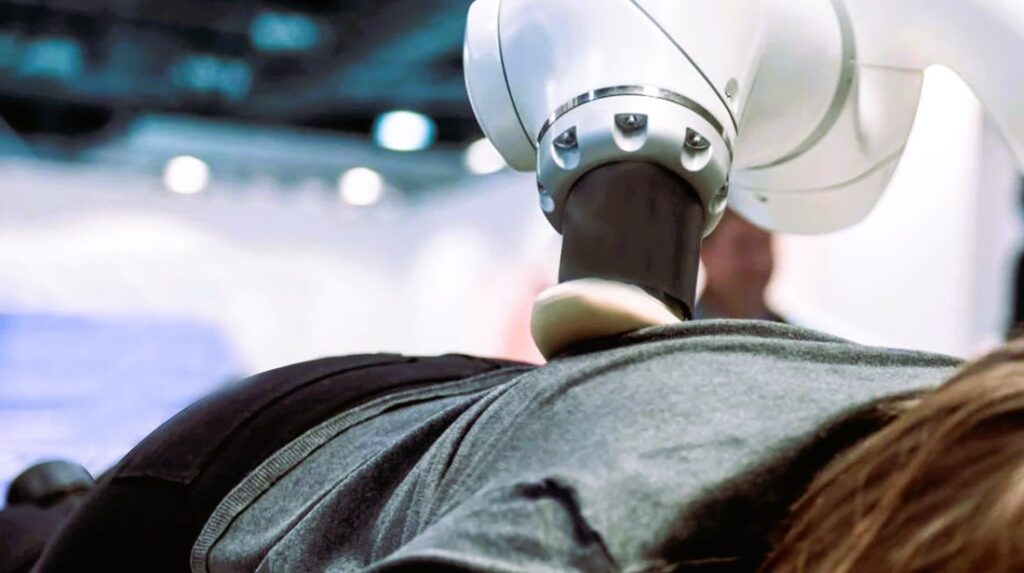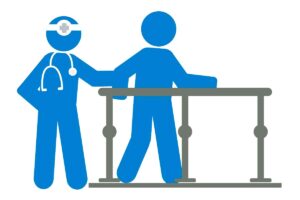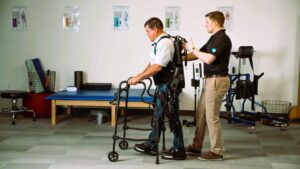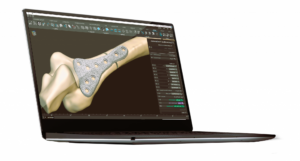In recent years, the field of physical therapy has witnessed a remarkable transformation, thanks to the integration of artificial intelligence (AI) into clinical practice. AI, a branch of computer science that aims to create intelligent machines capable of mimicking human cognitive functions, has opened up new possibilities for improving patient care, treatment outcomes, and rehabilitation techniques. This article explores the innovative applications of AI in physical therapy and its potential to revolutionize the way we approach rehabilitation.
Understanding Artificial Intelligence in Healthcare
Before delving into the specifics of AI in physical therapy, it’s crucial to grasp the basics of AI in healthcare. Artificial intelligence encompasses a broad range of technologies, including machine learning, natural language processing, computer vision, and robotics, among others. These technologies enable computers to analyze vast amounts of data, identify patterns, make predictions, and perform tasks that traditionally required human intelligence.
In the healthcare sector, AI is being leveraged to streamline clinical workflows, enhance diagnostic accuracy, personalize treatment plans, and improve patient outcomes. From medical imaging and disease prediction to drug discovery and virtual health assistants, AI has the potential to revolutionize every aspect of healthcare delivery.
Applications of AI in Physical Therapy

In the realm of physical therapy, AI is being deployed in various innovative ways to optimize rehabilitation strategies and enhance patient care. Some of the key applications of AI in physical therapy include:
- Personalized Treatment Plans: AI algorithms can analyze patient data, including medical history, movement patterns, and treatment responses, to tailor personalized rehabilitation programs. By considering individual factors such as age, injury severity, comorbidities, and functional goals, AI-powered systems can optimize treatment plans for better outcomes.
- Motion Analysis and Biomechanics: AI technologies, such as motion capture systems and wearable sensors, enable precise tracking and analysis of movement patterns during rehabilitation exercises. By providing real-time feedback on posture, gait, range of motion, and muscle activation, AI can help therapists identify biomechanical issues and customize interventions to address specific deficits.
- Virtual Reality Rehabilitation: Virtual reality (VR) platforms powered by AI algorithms offer immersive and interactive environments for therapeutic exercises and activities. These VR-based rehabilitation programs engage patients in virtual scenarios designed to improve motor skills, balance, coordination, and functional independence. AI-driven analytics track user performance and adjust the difficulty level of tasks to match individual capabilities.
- Predictive Analytics for Recovery: AI models trained on large datasets of patient outcomes can predict recovery trajectories and prognosis following injury or surgery. By analyzing factors such as demographic information, injury type, treatment history, and functional assessments, AI algorithms can identify risk factors for poor outcomes and guide clinicians in making informed decisions about intervention strategies. Navigation by salary level for physiotherapists, more details in our article.
- Smart Assistive Devices: AI-enabled prosthetics, orthotics, and exoskeletons are transforming assistive technology for individuals with mobility impairments. These smart devices use sensors, actuators, and AI algorithms to adapt to users’ movements in real time, providing customized support and assistance during activities of daily living and rehabilitation exercises.
Challenges and Considerations
While the potential benefits of AI in physical therapy are vast, several challenges and considerations must be addressed to ensure its effective implementation:
- Data Privacy and Security: AI systems rely on access to large volumes of sensitive patient data, raising concerns about privacy protection, data security, and compliance with regulatory requirements such as HIPAA. Robust safeguards and encryption protocols must be in place to safeguard patient confidentiality and prevent unauthorized access to health information.
- Ethical and Legal Implications: The use of AI in healthcare raises complex ethical and legal questions related to accountability, transparency, bias mitigation, and the potential for algorithmic discrimination. Clinicians and developers must navigate these issues carefully to ensure that AI technologies are used ethically and responsibly to benefit patients without perpetuating disparities or harm.
- Integration with Clinical Practice: Successful integration of AI into physical therapy practice requires collaboration between clinicians, technologists, researchers, and healthcare administrators. Training programs, continuing education initiatives, and interdisciplinary collaborations can help bridge the gap between AI innovation and clinical application, ensuring that therapists have the skills and knowledge to leverage AI tools effectively.

Conclusion
Artificial intelligence holds immense promise for revolutionizing physical therapy practice by enabling personalized treatments, optimizing rehabilitation outcomes, and advancing our understanding of human movement and function. By harnessing the power of AI-driven technologies, physical therapists can deliver more effective, efficient, and patient-centered care, ultimately enhancing the quality of life for individuals with musculoskeletal, neurological, and functional impairments.
For further information on the standardization of AI technologies in healthcare, visit Wikipedia’s page on Health informatics.
In summary, the integration of AI into physical therapy represents a transformative paradigm shift that has the potential to reshape the landscape of rehabilitation and improve outcomes for patients worldwide. As AI continues to evolve and mature, its role in physical therapy is poised to expand, offering new opportunities for innovation, research, and collaboration in the pursuit of optimal musculoskeletal health and function.




